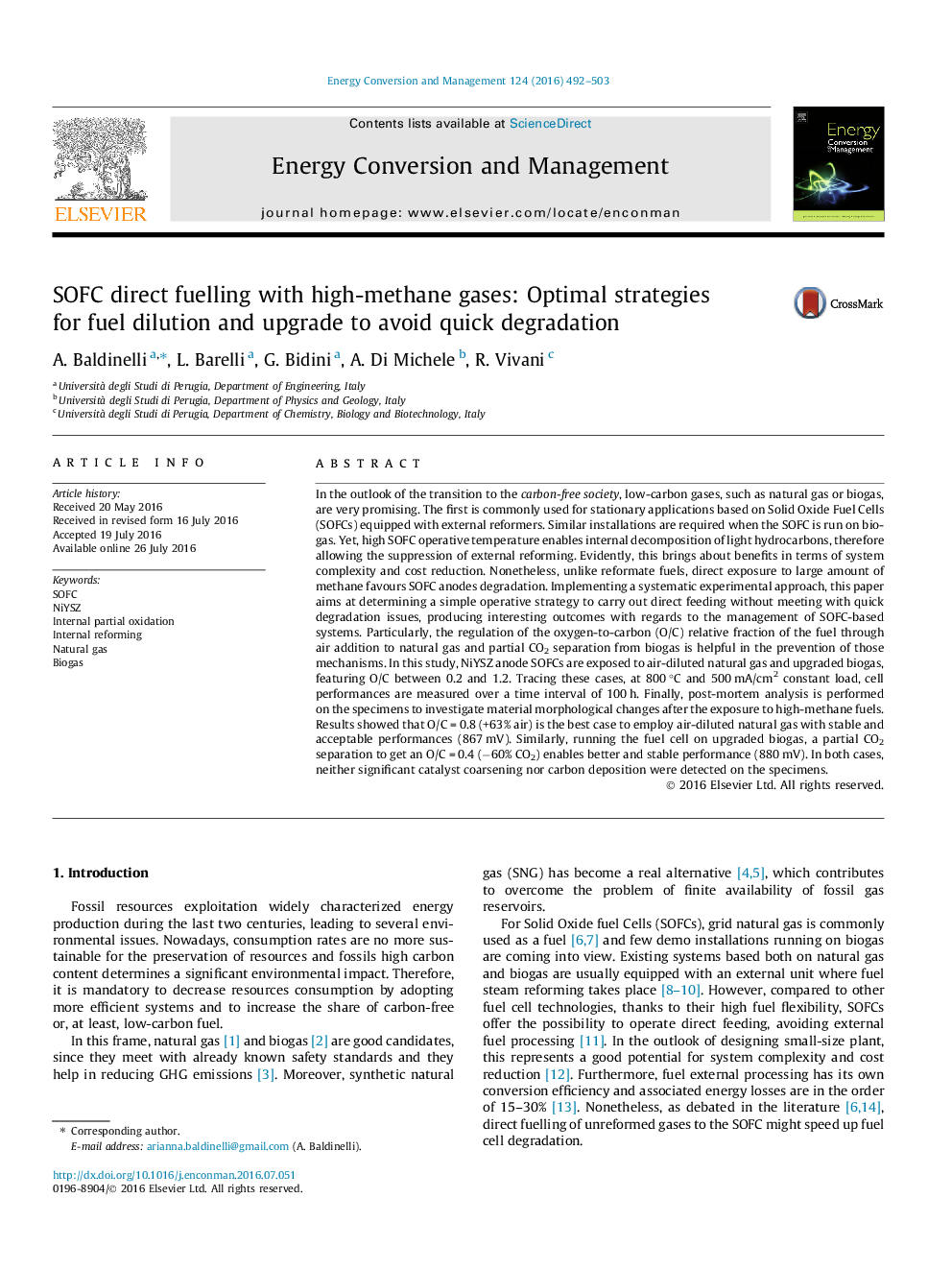| کد مقاله | کد نشریه | سال انتشار | مقاله انگلیسی | نسخه تمام متن |
|---|---|---|---|---|
| 765011 | 1462838 | 2016 | 12 صفحه PDF | دانلود رایگان |
• SOFCs are operated on natural gas and biogas direct feeding.
• Methane partial oxidation and dry reforming are compared.
• The optimal oxygen-to-carbon stoichiometry to avoid degradation is determined for both natural gas and biogas.
• NiYSZ anodes degradation mechanisms are investigated though SEM-EDX and XRD.
In the outlook of the transition to the carbon-free society, low-carbon gases, such as natural gas or biogas, are very promising. The first is commonly used for stationary applications based on Solid Oxide Fuel Cells (SOFCs) equipped with external reformers. Similar installations are required when the SOFC is run on biogas. Yet, high SOFC operative temperature enables internal decomposition of light hydrocarbons, therefore allowing the suppression of external reforming. Evidently, this brings about benefits in terms of system complexity and cost reduction. Nonetheless, unlike reformate fuels, direct exposure to large amount of methane favours SOFC anodes degradation. Implementing a systematic experimental approach, this paper aims at determining a simple operative strategy to carry out direct feeding without meeting with quick degradation issues, producing interesting outcomes with regards to the management of SOFC-based systems. Particularly, the regulation of the oxygen-to-carbon (O/C) relative fraction of the fuel through air addition to natural gas and partial CO2 separation from biogas is helpful in the prevention of those mechanisms. In this study, NiYSZ anode SOFCs are exposed to air-diluted natural gas and upgraded biogas, featuring O/C between 0.2 and 1.2. Tracing these cases, at 800 °C and 500 mA/cm2 constant load, cell performances are measured over a time interval of 100 h. Finally, post-mortem analysis is performed on the specimens to investigate material morphological changes after the exposure to high-methane fuels. Results showed that O/C = 0.8 (+63% air) is the best case to employ air-diluted natural gas with stable and acceptable performances (867 mV). Similarly, running the fuel cell on upgraded biogas, a partial CO2 separation to get an O/C = 0.4 (−60% CO2) enables better and stable performance (880 mV). In both cases, neither significant catalyst coarsening nor carbon deposition were detected on the specimens.
Journal: Energy Conversion and Management - Volume 124, 15 September 2016, Pages 492–503
